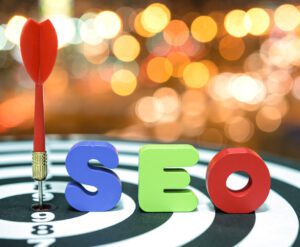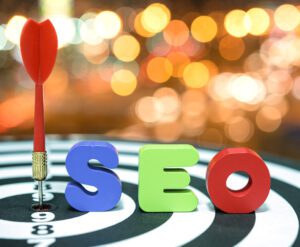Pricing is a critical aspect of any business strategy. It determines your revenue and influences consumer behavior and perceptions of value. By harnessing the principles of psychological pricing, businesses can optimize their pricing strategies to maximize sales and profitability.
In the business world, pricing isn’t just about assigning a number to a product or service; it’s a strategic decision that can significantly impact sales, customer perception, and overall profitability. The psychology of pricing delves into the intricate relationship between human behavior, perception, and pricing strategies. Understanding this psychology can empower businesses to set prices that maximize sales and create a positive and lasting impression on customers. This article will explore the fundamental principles and strategies behind effective pricing and how businesses can leverage them.
What is psychological pricing?
The psychology of pricing theory is a crucial part of your business. It can make or break sales and is one of the most critical factors in building brand awareness and marketing strategy. Pricing is more than how to charm people into buying your products; it’s about ensuring you’re charging enough for your product to cover costs and make a profit without making customers feel like they’re being ripped off. It’s based on research and studies to analyze consumer behavior and the impact of different marketing strategies on their perception of prices.
Psychological pricing is a strategy that uses pricing to influence a customer’s spending or shopping habits to make more or higher value sales. The objective is to satisfy the customer’s psychological needs, whether to save money, purchase the best product, or get a “good deal.”
Why is psychological pricing effective?
Psychological pricing shows that consumers need to learn what something should cost. We can determine if something is a good deal by getting it for a lower price than customarily listed or comparing it to similar products in the same category. Marketers and salespeople knew too well that what a customer was willing to pay was changeable and that money could be made from that fact.
Consumers want to know that they’re getting the best of something, whether it’s the best price point, quality, or value. Psychological pricing leans into that idea, using price to send the right signals to make customers feel successful.
How use the psychology of pricing to your benefit?
How do people decide what something is worth? First, they look at the alternatives—what else could they buy with their money? Then, they compare each seller’s price and weigh their relative merits. Finally, they decide which service best meets their immediate needs and preferences.
The best strategy is to draw their attention to how much better your product or services are than your competitors. That way, when they compare your product with theirs, they’ll see that yours has better features or benefits, which drives them to pay more for that difference in quality.
How do we attract more customers using the psychology of pricing?
Now that we understand why pricing strategies are so important, let’s take a look at some different methods that can help us set better prices that attract customers using the psychology of pricing:
Focus on perceived value.
One of the most essential concepts in pricing is perceived value. This is the idea that consumers will pay more for a product or service if they perceive it to be more valuable. For example, a high-end restaurant might charge more for a meal because they use high-quality ingredients and offer exceptional service. In contrast, a fast-food restaurant might charge less for a meal because it provides a more basic experience.
Businesses must understand what customers value most to use perceived value in pricing. This might include things like quality, convenience, or customer service. Once they know what their customers value, they can price their products or services accordingly. For example, a business that values quality might charge more for its products, while a company that values convenience might charge more for delivery or online ordering.
Be clear about your value proposition.
When selling a product or service, it’s essential to be clear about what makes your offering unique, valuable, and better than other options. If people can’t tell what makes you unique, they’ll likely go with someone else who offers more compelling reasons to buy from them instead of you.
The key is to share what makes your product attractive, encouraging the customer to purchase. The more clearly you define your value proposition, the easier it will be to attract customers and close deals.
Seek out customers who are ready to buy.
One of the biggest mistakes salespeople make when using the psychology of pricing is trying to sell their products or services to people who aren’t interested in buying them. When you do this, you waste time and energy trying to get a “yes” when the answer should be “no.”
Practice the anchoring method.
Anchoring involves presenting a product or service at a higher price first, then offering it at a lower price as an incentive. For example, if you’re selling an online course for $100, you could offer it for $50 during the first week or month after launch, effectively taking advantage of anchoring by setting a higher anchor point that makes $50 seem like a bargain in comparison. In the minds of your buyers, they’re getting a good deal, but at the same time, you’re making profits.
Use scarcity.
Scarcity is one of the best techniques in the psychology of pricing to create more sales! This technique can boost sales by creating the illusion of something being more valuable because there’s less available—even if there isn’t less known! For example, if you’re selling a new product model, make it available for a limited time only.
Again, this is because people tend to place more value on things that are rare and in short supply. Keeping your customers under the impression that the product will soon run out will subconsciously woo them into buying it more urgently. They’re more likely to buy it in increasing volumes if they perceive it as scarce.
Always study your audience.
Your customer’s shopping brain is more likely to repeat behaviors they’ve already engaged in.
This is why knowing your audience and what they want is so important. By studying their behavior patterns, you can create a shopping experience that aligns with their expectations. You can track how customers interact with your store and what they buy. This will allow you to see which products are most popular, who buys them, and what kinds of people purchase them.
Conclusion:
The psychology of pricing is a powerful yet uncomplicated tool to use when making marketing decisions in your company. It’s a gateway to understanding your customers and making more informed decisions about pricing strategies. The more you know about the psychology of pricing, the better your marketing will be.








